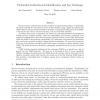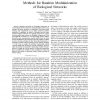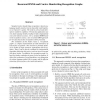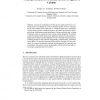102 search results - page 16 / 21 » A Formal Model of Identity Mixer |
CRYPTO
2010
Springer
15 years 25 days ago
2010
Springer
Secure two-party authentication and key exchange are fundamental problems. Traditionally, the parties authenticate each other by means of their identities, using a public-key infr...
BIBE
2006
IEEE
15 years 5 months ago
2006
IEEE
— Biological networks are formalized summaries of our knowledge about interactions among biological system components, like genes, proteins, or metabolites. From their global top...
WWW
2004
ACM
16 years 11 days ago
2004
ACM
While we expect to discover knowledge in the texts available on the Web, such discovery usually requires many complex analysis steps, most of which require different text handling...
ICDAR
2009
IEEE
14 years 9 months ago
2009
IEEE
Standard cursive handwriting recognition is based on a language model, mostly a lexicon of possible word hypotheses or character n-grams. The result is a list of word alternatives...
100
click to vote
CANS
2009
Springer
15 years 6 months ago
2009
Springer
Abstract. Anonymous credentials are widely used to certify properties of a credential owner or to support the owner to demand valuable services, while hiding the user’s identity ...




